Temporomandibular Joint (TMJ)
A joint implant tailored to the needs of the patient. The friction pair is selected based on the wishes of the surgeon. We can produce glenoid fossae from polished titanium, UHMWPE or PEEK. Fixation is calculated at the preoperative planning stage based on the condition of the bone, ease of access and safety of the mandibular nerve and cranial cavities. The personalized approach allows you to combine this type of surgery with bone remodeling and orthognathic corrections
- Reduced surgery time
- Less risk of infection
- Anatomical reconstruction of the defect
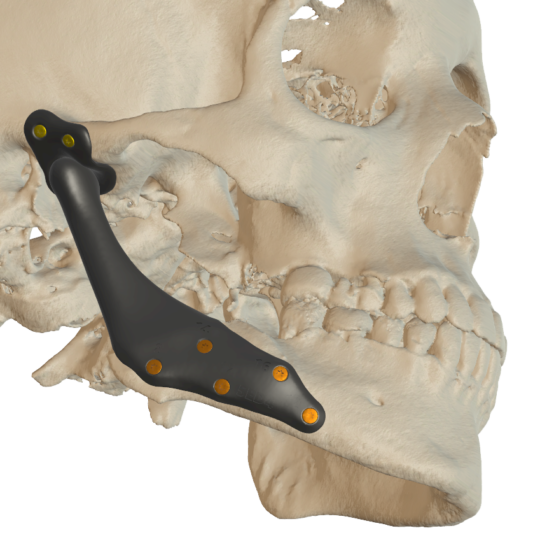
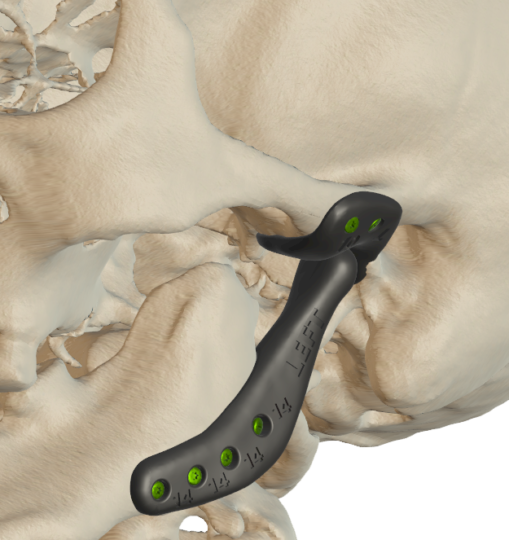
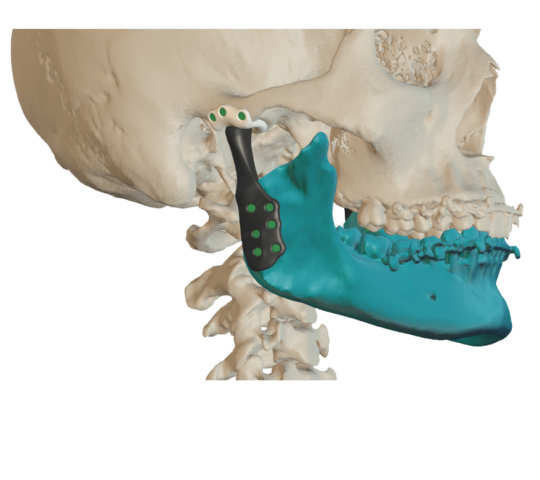
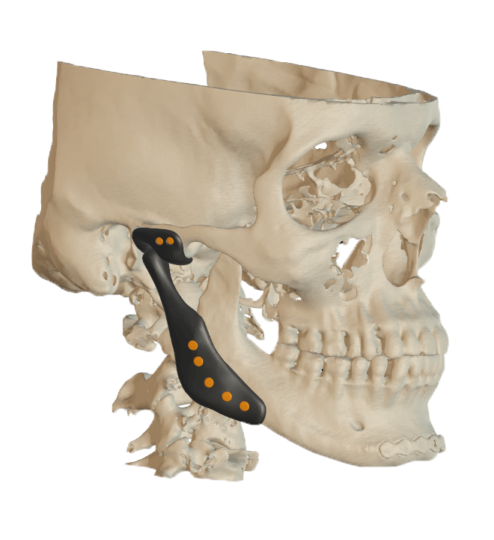




Orthognathic surgery
Surgical guides ensure the highest accuracy of the operation, and the anatomical shape allows you to achieve an optimal fit.
Guide sets can be designed for both jaws and contain intermediate components for positioning fragments after osteotomy.
Anchoring splints help to achieve the planned relationship of the upper and lower jaws based on the desired bite.
It is possible to manufacture fixing titanium plates, or use standard elements available to the surgeon.
- Reduced surgery time
- Less risk of infection
- Anatomical reconstruction of the defect
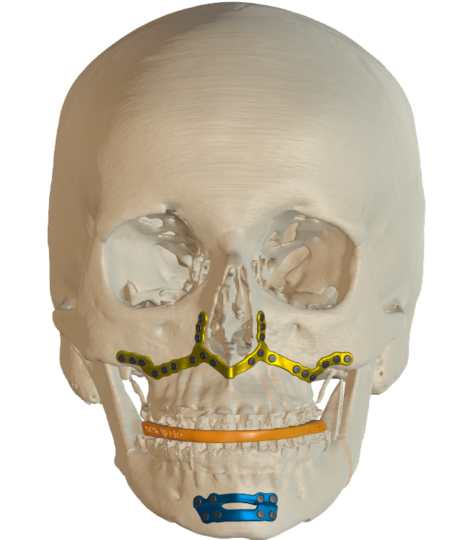

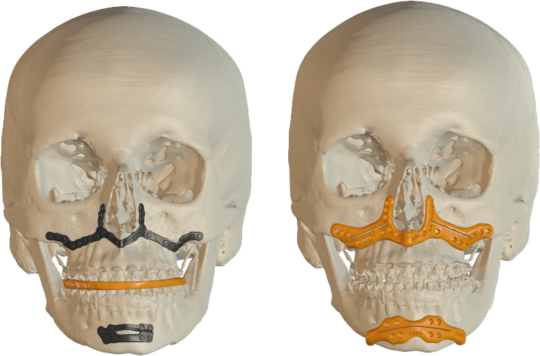

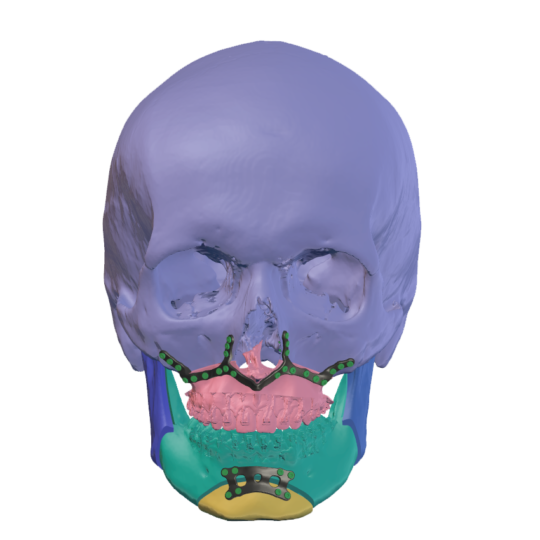



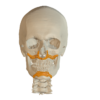

Traumatology and restoration of defects
Individual components for fixation / augmentation / replacement of facial fragments, made from various biocompatible materials, provide optimal reconstruction of the middle and / or lower third, which leads not only to functional, but also to aesthetic reconstruction.
This product is available in various configurations and materials:
Titanium (solid and mesh)
PEEK (solid and mesh)
UHMWPE
- Reduced surgery time
- Less risk of infection
- Anatomical reconstruction of the defect

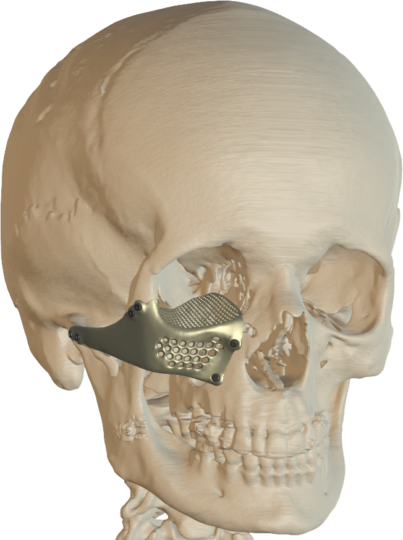
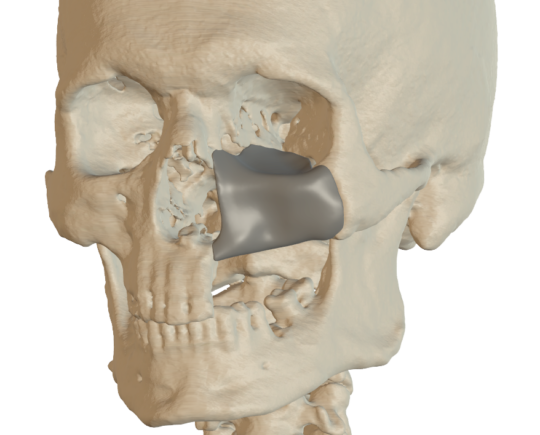
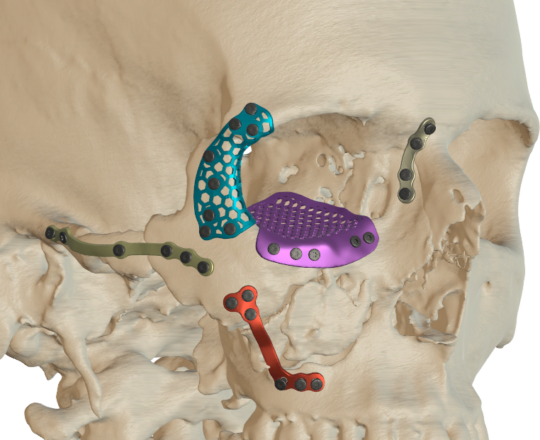
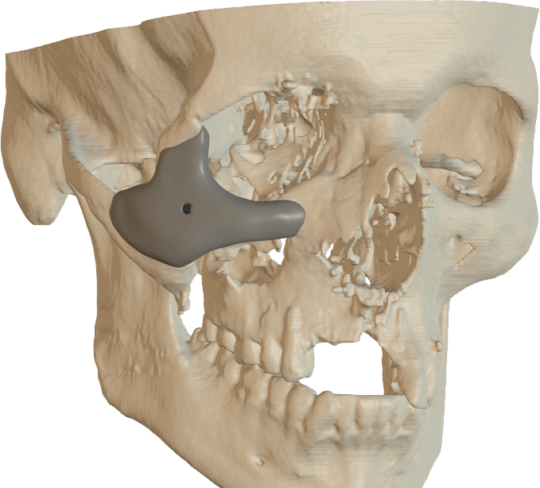

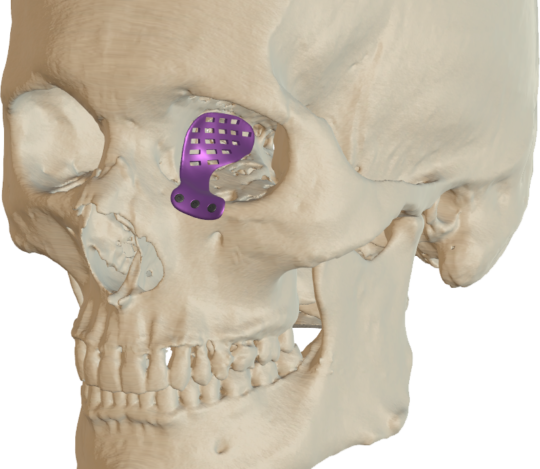
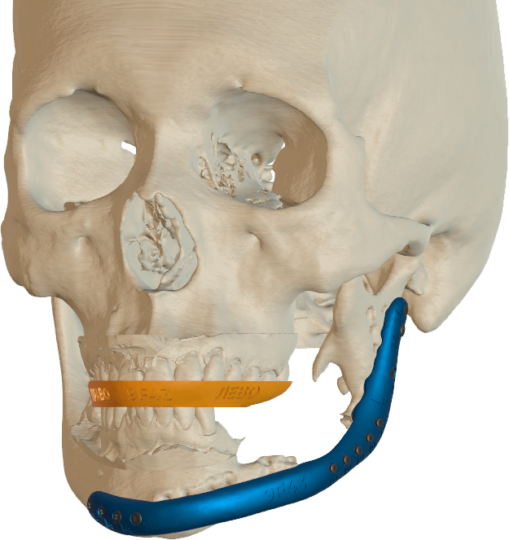
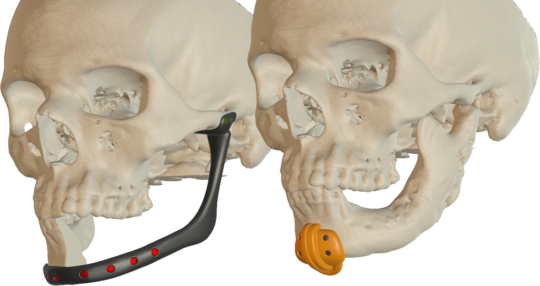









Microsurgery
A set of guide rails for jaw reconstruction with fibular microvascularization allows to optimally approximate the silhouette of the patient's jaw.
The guides contain carefully designed osteotomy planes to ensure full contact between the fibular fragments and adhere to medical indications.
- Reduced surgery time
- Less risk of infection
- Anatomical reconstruction of the defect
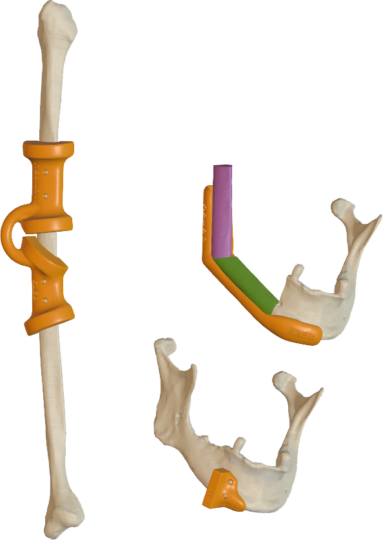
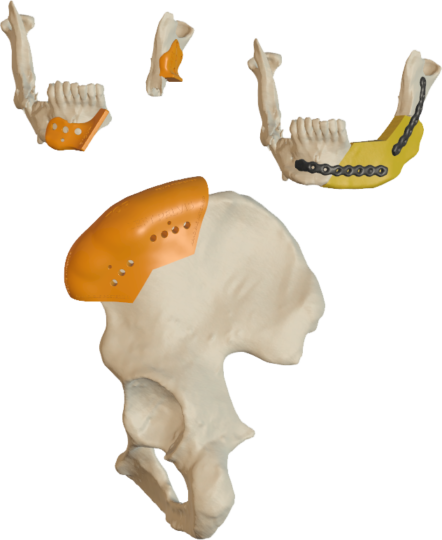
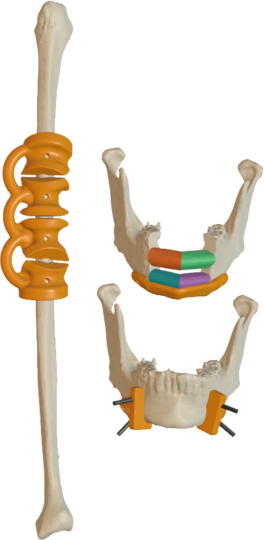

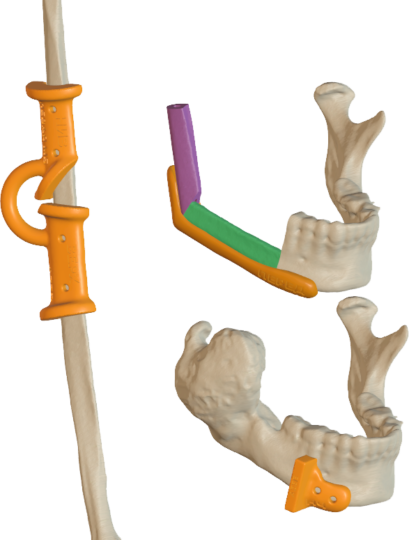





Subperiosteal implantation
Implants for pelvic and acetabular reconstruction with porous inserts at the bone contact points for better osseointegration. The implant is adapted for cement fixation of the friction pair.
The implant fasteners are calculated in advance during the preoperative planning stage. This makes it possible to plan the introduction of screws in the area of the highest bone density, provide access for installation, and adapt the shape of the fasteners in accordance with the defect.
- Reduced surgery time
- Less risk of infection
- Anatomical reconstruction of the defect
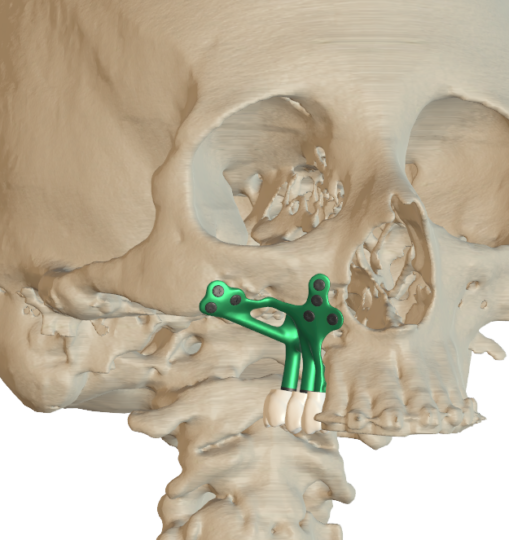
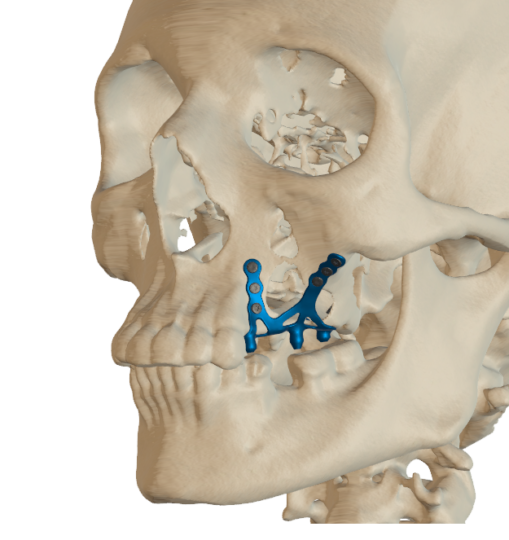
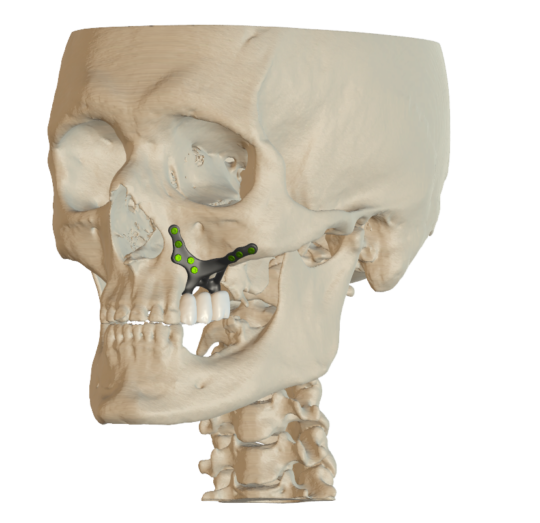



Materials
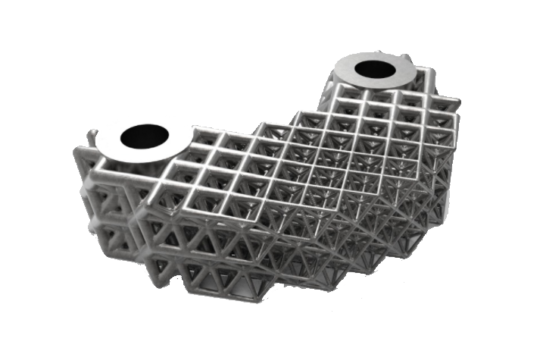
Ti6Al4V ELI
The best material for the creation of implants and other medical devices is currently considered to be titanium and its alloys, which have a full range of properties that meet the requirements of medicine: high corrosion resistance, sufficient mechanical and cyclic strength, and wear resistance.
Sterilization of products from titanium alloys by boiling, autoclaving, formalin vapor, burning, immersion in alcohol does not damage the metal surface.
Due to the biological inertness of titanium structures to the human body, during implantation, they are not rejected and do not provoke allergic reactions, quickly being covered with musculoskeletal tissues, the structure of which remains constant throughout subsequent life.
It can be used both in solid models and in the form of a titanium mesh, or a porous cellular structure for better osseointegration.

Photopolymer Resin
Biocompatible material, ISO 13485 compliant and designed for healthcare professionals worldwide. Such medical materials can be used for applications that require contact with the patient’s skin, mucosa and blood.
Used for the production of medical guides, fixation templates and sterilizable anatomical models
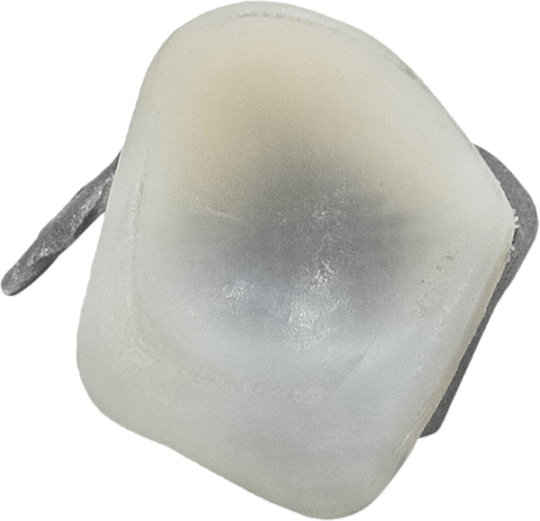
UHMWPE
UHMWPE has very low water absorption for organic polymer compounds, therefore the properties of UHMWPE do not change when exposed to water. The main properties of UHMWPE, which determine its use, are very high wear resistance, low coefficient of friction and high fracture toughness.
It is used for the production of titanium / polyethylene friction pairs
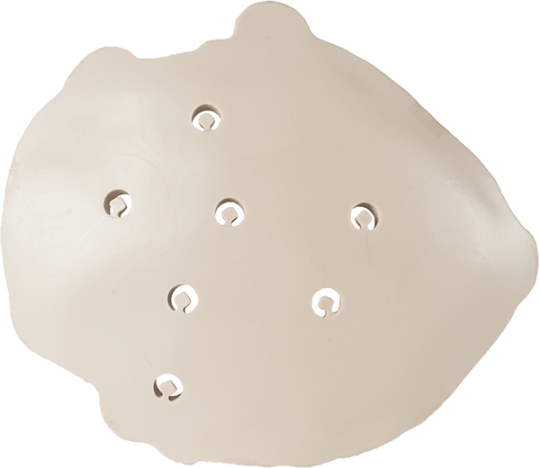
PEEK
PEEK is a synthetic material that has many advantages in CMF reconstruction surgery: strength, stiffness, chemical inertness and durability. PEEK is used for cranioplasty and facial implants.
The material can be sterilized and reused (in case of failure due to infection) and can be easily modified during surgery using surgical instruments.
PEEK, as a polymer, has an extremely low thermal conductivity compared to titanium, which already has a low thermal conductivity compared to other metals.